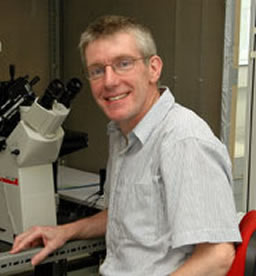Other new potential therapies
Cysteamine and epigallocatechin gallate (EGCG) – a green tea flavonoid
De Stefano D, Villella VR, Esposito S, Tosco A, Sepe A, De Gregorio F, Salvadori L, Grassia R, Leone CA, De Rosa G, Maiuri MC, Pettoello-Mantovani M, Guido S, Bossi A, Zolin A, Venerando A, Pinna LA, Mehta A, Bona G, Kroemer G, Maiuri L, Raia V. Restoration of CFTR function in patients with cystic fibrosis carrying the F508del-CFTR mutation. Autophagy. 2014;10(11):2053-74. doi: 10.4161/15548627.2014.973737. Free PMC Article [Pubmed]
Restoration of BECN1/Beclin 1-dependent autophagy and depletion of SQSTM1/p62 by genetic manipulation or autophagy-stimulatory proteostasis regulators, such as cystamine, have positive effects on mouse models of human cystic fibrosis (CF). These measures rescue the functional expression of the most frequent pathogenic CFTR mutant, F508del, at the respiratory epithelial surface and reduce lung inflammation in Cftr(F508del) homozygous mice. Cysteamine, the reduced form of cystamine, is an FDA-approved drug. Here, we report that oral treatment with cysteamine greatly reduces the mortality rate and improves the phenotype of newborn mice bearing the F508del-CFTR mutation. Cysteamine was also able to increase the plasma membrane expression of the F508del-CFTR protein in nasal epithelial cells from F508del homozygous CF patients, and these effects persisted for 24 h after cysteamine withdrawal. Importantly, this cysteamine effect after washout was further sustained by the sequential administration of epigallocatechin gallate (EGCG), a green tea flavonoid, both in vivo, in mice, and in vitro, in primary epithelial cells from CF patients. In a pilot clinical trial involving 10 F508del-CFTR homozygous CF patients, the combination of cysteamine and EGCG restored BECN1, reduced SQSTM1 levels and improved CFTR function from nasal epithelial cells in vivo, correlating with a decrease of chloride concentrations in sweat, as well as with a reduction of the abundance of TNF/TNF-alpha (tumor necrosis factor) and CXCL8 (chemokine [C-X-C motif] ligand 8) transcripts in nasal brushing and TNF and CXCL8 protein levels in the sputum. Altogether, these results suggest that optimal schedules of cysteamine plus EGCG might be used for the treatment of CF caused by the F508del-CFTR mutation.
Tosco A, De Gregorio F, Esposito S, De Stefano D, Sana I, Ferrari E, Sepe A, Salvadori L, Buonpensiero P, Di Pasqua A, Grassia R, Leone CA, Guido S, De Rosa G, Lusa S, Bona G, Stoll G8, Maiuri MC, Mehta A, Kroemer G, Maiuri L, Raia V. A novel treatment of cystic fibrosis acting on-target: cysteamine plus epigallocatechin gallate for the autophagy-dependent rescue of class II-mutated CFTR. Cell Death Differ. 2016 Aug;23(8):1380-93. doi: 10.1038/cdd.2016.22. Epub 2016 Apr 1.Free PMC Article [Pubmed]
The authors previously reported that the combination of two safe proteostasis regulators, cysteamine and epigallocatechin gallate (EGCG), can be used to improve deficient expression of the cystic fibrosis transmembrane conductance regulator (CFTR) in patients homozygous for the CFTR Phe508del mutation. Here we provide the proof-of-concept that this combination treatment restored CFTR function and reduced lung inflammation (P<0.001) in Phe508del/Phe508del or Phe508del/null-Cftr (but not in Cftr-null mice), provided that such mice were autophagy-competent. Primary nasal cells from patients bearing different class II CFTR mutations, either in homozygous or compound heterozygous form, responded to the treatment in vitro. We assessed individual responses to cysteamine plus EGCG in a single-centre, open-label phase-2 trial. The combination treatment decreased sweat chloride from baseline, increased both CFTR protein and function in nasal cells, restored autophagy in such cells, decreased CXCL8 and TNF-α in the sputum, and tended to improve respiratory function. These positive effects were particularly strong in patients carrying Phe508del CFTR mutations in homozygosity or heterozygosity. However, a fraction of patients bearing other CFTR mutations failed to respond to therapy. Importantly, the same patients whose primary nasal brushed cells did not respond to cysteamine plus EGCG in vitro also exhibited deficient therapeutic responses in vivo. Altogether, these results suggest that the combination treatment of cysteamine plus EGCG acts ‘on-target’ because it can only rescue CFTR function when autophagy is functional (in mice) and improves CFTR function when a rescuable protein is expressed (in mice and men). These results should spur the further clinical development of the combination treatment.
Numata T, Sato-Numata K, Okada Y. Herbal components of Japanese Kampo medicines exert laxative actions in colonic epithelium cells via activation of BK and CFTR channels. Sci Rep. 2019 Oct 29;9(1):15554. doi: 10.1038/s41598-019-52171-z. Free full text [Pubmed]
Japanese Kampo medicines Junchoto and Mashiningan are mixtures of numerous herbal plant extracts and empirically known to exert laxative actions by stimulating fluid secretion in the colonic epithelium. However, it is unknown which and how the herbal components of these crude Kampo drugs are effective to stimulate ion effluxes causing fluid secretion.
Here, the authors selected four herbal components of Junchoto and Mashiningan, Mashinin (MSN), Kyonin (KYN), Tonin (TON), and Daio (DIO), which are putatively laxatives, and examined their effects on the ion channel activity of human colonic epithelial Caco-2 cells. Patch clamp analyses revealed that MSN activated whole-cell current characteristics of the cystic fibrosis transmembrane conductance regulator (CFTR) channel, whereas KYN, TON, and DIO activated the large-conductance and voltage-activated K+ (BK) channel. Furthermore, electronic cell sizing showed that MSN induced secretory volume decrease (SVD) sensitivity to a CFTR blocker, whereas TON, KYN, and DIO induced SVD sensitivity to a K+ channel blocker.
In conclusion, MSN and TON, KYN, and DIO promote fluid secretion from colonic epithelial cells by activating CFTR and BK channels. Thus, Japanese Kampo medicines, Junchoto and Mashiningan, exert anti-constipation actions by inducing KCl efflux through the combined actions of CFTR- and BK-stimulating herbal components.
From the Department of Physiology, Graduate School of Medical Sciences, Fukuoka University, Fukuoka, 814-0180, Japan. numata@fukuoka-u.ac.jp.
– Interesting work which may have some clinical relevance as the search for active compounds continues.
Phuan PW, Tan JA Rivera AA, Zlock L, Nielson DW, Finkbeiner WE, Haggie PM, Verkman AS. Nanomolar-potency ‘co-potentiator’ therapy for cystic fibrosis caused by a defined subset of minimal function CFTR mutants. Sci Rep. 2019 Nov 27;9(1):17640. doi: 10.1038/s41598-019-54158-2 [Pubmed] Free full text
Available CFTR modulators provide no therapeutic benefit for cystic fibrosis (CF) caused by many loss-of-function mutations in the cystic fibrosis transmembrane conductance regulator (CFTR) chloride channel, including N1303K. We previously introduced the concept of ‘co-potentiators’ (combination-potentiators) to rescue CFTR function in some minimal function CFTR mutants. Herein, a screen of ~120,000 drug-like synthetic small molecules identified active co-potentiators of pyrazoloquinoline, piperidine-pyridoindole, tetrahydroquinoline and phenylazepine classes, with EC50 down to ~300 nM following initial structure-activity studies.
Increased CFTR chloride conductance by up to 8-fold was observed when a co-potentiator (termed ‘Class II potentiator’) was used with a classical potentiator (‘Class I potentiator’) such as VX-770 or GLPG1837.
To investigate the range of CFTR mutations benefitted by co-potentiators, 14 CF-associated CFTR mutations were studied in transfected cell models. Co-potentiator efficacy was found for CFTR missense, deletion and nonsense mutations in nucleotide binding domain-2 (NBD2), including W1282X, N1303K, c.3700A > G and Q1313X (with corrector for some mutations). In contrast, CFTR mutations G85E, R334W, R347P, V520F, R560T, A561E, M1101K and R1162X showed no co-potentiator activity, even with corrector. Co-potentiator efficacy was confirmed in primary human bronchial epithelial cell cultures generated from a N1303K homozygous CF subject.
The author concluded the Class II potentiators identified here may have clinical benefit for CF caused by mutations in the NBD2 domain of CFTR.
From the Department of Medicine, University of California, San Francisco, San Francisco, CA, USA.
Hongyu Li, Hennie Valkenier, Abigail G. Thorne, Christopher M. Dias, James A. Cooper, Marion Kieffer, Nathalie Busschaert, Philip A. Gale, David N. Sheppard, Anthony P. Davis. Anion carriers as potential treatments for cystic fibrosis: transport in cystic fibrosis cells, and additivity to channel-targeting drugs. Chem. Sci., 2019, 10, 9663

Anthony Davis

Philip Gale

David Sheppard
Defective anion transport is a hallmark of the genetic disease cystic fibrosis (CF). One approach to restore anion transport to CF cells utilises alternative pathways for transmembrane anion transport, including artificial anion carriers (anionophores). Here, the authors screened 22 anionophores for biological activity using fluorescence emission from the halide-sensitive yellow fluorescent protein. Three compounds possessed anion transport activity similar to or greater than that of a bis-(p-nitrophenyl)ureidodecalin previously shown to have promising biological activity. Anion transport by these anionophores was concentration- dependent and persistent.
All four anionophores mediated anion transport in CF cells, and their activity was additive to rescue of the predominant disease-causing variant F508del-CFTR using the clinically- licensed drugs lumacaftor and ivacaftor. Toxicity was variable but minimal at the lower end. The results provide further evidence that anionophores, by themselves or together with other treatments that restore anion transport, offer a potential therapeutic strategy for CF.
Hongyu Li is Senior Research Fellow Bristol Medical School
Corresponding Authors –
Philip Gale is Professor of Chemistry and Head of School, University of Sydney
David Sheppard is Professor at the School of Physiology, Pharmacology and Neuroscience, Bristol.
Anthony P Davis is Professor at the School of Chemistry University of Bristol
Krainer G, Schenkel M, Hartmann A, Ravamehr-Lake D, Deber CM, Schlierf M. CFTR transmembrane segments are impaired in their conformational adaptability by a pathogenic loop mutation and dynamically stabilized by Lumacaftor. J Biol Chem. 2019 Dec 27. pii: jbc.AC119.011360. doi: 10.1074/jbc.AC119.011360. [Epub ahead of print] Free full text [Pubmed]

Michael Schliert
The cystic fibrosis transmembrane conductance regulator (CFTR) is an ion channel protein that is defective in

Georg Krainer
individuals with cystic fibrosis (CF). To advance the rational design of CF therapies, it is important to elucidate how mutational defects in CFTR lead to its impairment and how pharmacological compounds interact with and alter CFTR. Here, using a helical-hairpin construct derived from CFTR’s transmembrane (TM) helices 3 and 4 (TM3/4) and their intervening loop, we investigated the structural effects of a patient-derived CF-phenotypic mutation, E217G, located in the loop region of CFTR’s membrane-spanning domain. Employing a single-molecule FRET assay to probe the folding status of reconstituted hairpins in lipid bilayers, we found that the E217G hairpin exhibits an altered adaptive packing behavior stemming from an additional GXXXG helix-helix interaction motif created in the mutant hairpin. This observation suggested that the misfolding and functional defects caused by the E217G mutation arise from an impaired conformational adaptability of TM helical segments in CFTR. Addition of the small-molecule corrector Lumacaftor exerts a helix stabilization effect not only on the E217G mutant hairpin, but also on WT TM3/4 and other mutations in the hairpin. This finding suggests a general mode of action for Lumacaftor through which this corrector efficiently improves maturation of various CFTR mutants.
Dr Georg Krainer is at Technische Universitat Dresden Germany and Department of Chemistry University of Cambridge
Corresponding author is Dr Michael Schlierf is research group leader of B Cube and Professor of Molecular Biophysics awarded
Bose SJ, Krainer G, Ng DRS, Schenkel M, Shishido H, Yoon JS, Haggie PM, Schlierf M, Sheppard DN, Skach WR. Towards next generation therapies for cystic fibrosis: Folding, function and pharmacology of CFTR. J Cyst Fibros. 2020 Jan 2. pii: S1569-1993(19)30989-0. doi: 10.1016/j.jcf.2019.12.009. [Epub ahead of print] [Pubmed]
The treatment of cystic fibrosis (CF) has been transformed by orally-bioavailable small molecule modulators of the cystic fibrosis transmembrane conductance regulator (CFTR), which restore function to CF mutants. However, CFTR modulators are not available to all people with CF and better modulators are required to prevent disease progression. Here, they review selectively recent advances in CFTR folding, function and pharmacology. They highlight ensemble and single-molecule studies of CFTR folding, which provide new insight into CFTR assembly, its perturbation by CF mutations and rescue by CFTR modulators. They discuss species-dependent differences in the action of the F508del-CFTR mutation on CFTR expression, stability and function, which might influence pharmacological studies of CFTR modulators in CF animal models. Finally, they illuminate the identification of combinations of two CFTR potentiators (termed co-potentiators), which restore therapeutically-relevant levels of CFTR activity to rare CF mutations. Thus, mechanistic studies of CFTR folding, function and pharmacology inform the development of highly effective CFTR modulators.
The first author of this multinational paper is S J Bose from the School of Physiology, Pharmacology and Neuroscience, University of Bristol, Bristol BS8 1TD, UK
Danahay HL, Lilley S, Fox R, Charlton H, Sabater J, Button B, McCarthy C, Collingwood SP, Gosling M. TMEM16A Potentiation: A Novel Therapeutic Approach for the Treatment of Cystic Fibrosis.
Am J Respir Crit Care Med. 2020 Jan 3. doi: 10.1164/rccm.201908-1641OC. [Epub ahead of print] [Pubmed]

Henry Donahay
Rationale: Enhancing non-CFTR mediated anion secretion is an attractive therapeutic approach for the treatment of cystic fibrosis and other muco-obstructive diseases. Objectives: To determine the effects of TMEM16A potentiation upon epithelial fluid secretion and mucociliary clearance. Methods: The effects of a novel low molecular weight TMEM16A potentiator (ETX001) were evaluated in human cell and animal models of airway epithelial function and mucus transport. Measurements & Main Results: Potentiating the activity of TMEM16A with ETX001 increased the Ca2+-activated Cl- channel activity and anion secretion in human bronchial epithelial cells from cystic fibrosis patients without impacting on calcium signalling. ETX001 rapidly increased fluid secretion and airway surface liquid height in cystic fibrosis human bronchial epithelial cells under both static and conditions designed to mimic the shear stress associated with tidal breathing. In ovine models of mucus clearance (tracheal mucus velocity and mucociliary clearance), inhaled ETX001 was able to accelerate clearance both when CFTR function was reduced by administration of a pharmacological blocker and when CFTR was fully functional. Conclusions: Enhancing the activity of TMEM16A increases epithelial fluid secretion and enhances mucus clearance independent of CFTR function. TMEM16A potentiation is a novel approach for the treatment of patients with cystic fibrosis and non-CF muco-obstructive diseases. This article is open access and distributed under the terms of the Creative Commons Attribution Non-Commercial No Derivatives License 4.0 (http://creativecommons.org/licenses/by-nc-nd/4.0/).
Dr Henry Danahay is co-founder of Enterprise Therapeutics Ltd, Brighton, head of biology and Hon. Senior Research Fellow University of Sussex
Jarosz-Griffiths HH, Scambler T, Wong CH Lara-Reyna S, Holbrook J, Martinon F, Savic S, Whitaker P, Etherington C, Spoletini G, Clifton I6, Mehta A, McDermott MF, Peckham D. Different CFTR modulator combinations downregulate inflammation differently in cystic fibrosis.
Elife. 2020 Mar 2;9. pii: e54556. doi: 10.7554/eLife.54556.[Pubmed] Free full text

Thomas E Scambler

Heledd Jarosz-Griffiths
Previously, we showed that serum and monocytes from patients with CF exhibit an enhanced NLRP3-inflammasome signature with increased IL-18, IL-1β, caspase-1 activity and ASC speck release (Scambler et al. eLife 2019). Here we show that CFTR modulators down regulate this exaggerated proinflammatory response following LPS/ATP stimulation. In vitro application of ivacaftor/lumacaftor or ivacaftor/tezacaftor to CF monocytes showed a significant reduction in IL-18, whereas IL-1β was only reduced with ivacaftor/tezacaftor. Thirteen adults starting ivacaftor/lumacaftor and eight starting ivacaftor/tezacaftor were assessed over three months. Serum IL-18 and TNF decreased significantly with treatments, but IL-1β only declined following ivacaftor/tezacaftor. In (LPS/ATP-stimulated) PBMCs, IL-18/TNF/caspase-1 were all significantly decreased and IL-10 was increased with both combinations. Ivacaftor/tezacaftor alone showed a significant reduction in IL-1β and pro-IL-1β mRNA.
This study demonstrates that these CFTR modulator combinations have potent anti-inflammatory properties, in addition to their ability to stimulate CFTR function, which could contribute to improved clinical outcomes.
Co-authors – Dr Heledd H Jarosz-Griffiths is in Leeds Institute of Medical Research at St James’s and the Leeds Cystic Fibrosis Trust Strategic Research Centre, University of Leeds, United Kingdom.
Dr Thomas Scambler of the Institute of Medical Research at St James’s, University of Leeds and the Leeds Institute of Rheumatic and Musculoskeletal Medicine, University of Leeds, United Kingdom.
Comments from the journal Editors, (Jos WM van der Meer and Siroon Bekkering, Radboud University, Netherlands) – “the paper convincingly shows the auto-inflammatory characteristics of CF, and its dependence on NLRP3. The underlying mechanisms have been thoroughly studied. With that, the paper is innovative and provides insights that will be clinically relevant, especially as it will probably have consequences for new treatment modalities”.
Lead authors (Dr Thomas Scambler and Dr Heledd Jarosz-Griffiths, St James’ University Hospital) comment “Blocking the sodium channel (ENaC) in combination with therapies targeting chemical cytokines (IL-18 and IL-1b) which are over-produced in CF is a potential strategy to reduce inflammation in CF, and may help combat the onset of secondary diseases such as diabetes and joint disease.”
Mingione A, Dei Cas M, Bonezzi F, Caretti A, Piccoli M, Anastasia L, Ghidoni R, Paroni R, Signorelli P.Inhibition of Sphingolipid Synthesis as a Phenotype-Modifying Therapy in Cystic Fibrosis. Cell Physiol Biochem. 2020 Jan 31;54(1):110-125. doi: 10.33594/000000208. Free full text [Pubmed]
Cystic Fibrosis (CF) is an inherited disease associated with a variety of mutations affecting the CFTR gene. A deletion of phenylalanine 508 (F508) affects more than 70% of patients and results in unfolded proteins accumulation, originating a proteinopathy responsible for inflammation, impaired trafficking, altered metabolism, cholesterol and lipids accumulation, impaired autophagy at the cellular level. Lung inflammation has been extensively related to the accumulation of the lipotoxin ceramide. We recently proved that inhibition of ceramide synthesis by Myriocin reduces inflammation and ameliorates the defence response against pathogens infection, which is downregulated in CF. Here, we describe the mechanisms of Myriocin therapeutic effects in Cystic Fibrosis broncho-epithelial cells.
Cystic Fibrosis bronchial epithelia accumulate lipids, exacerbating inflammation. Myriocin administration: i) activates the transcriptions of genes involved in enhancing autophagy-mediated stress clearance; ii) reduces the content of several lipid species and, at the same time, iii) enhances mitochondrial lipid oxidation. Silencing the expression of Sptlc1 reproduces Myriocin induced autophagy and transcriptional activities, demonstrating that the inhibition of sphingolipid synthesis drives a transcriptional program aimed at addressing cell metabolism towards lipid oxidation and at exploiting autophagy mediated clearance of stress. They speculate that regulating sphingolipid de novo synthesis can relieve from chronic inflammation, improving energy supply and anti-oxidant responses, indicating an innovative therapeutic strategy for CF.
From the Biochemistry and Molecular Biology Laboratory, Health Sciences Department, University of Milan, Italy.
Pedemonte N, Bertozzi F, Caci E, Sorana F, Di Fruscia P, Tomati V, Ferrera L, Rodríguez-Gimeno A, Berti F2, Pesce E, Sondo E, Gianotti A, Scudieri P, Bandiera T, Galietta LJV. Discovery of a picomolar potency pharmacological corrector of the mutant CFTR chloride channel. Sci Adv. 2020 Feb 21;6(8):eaay9669. doi: 10.1126/sciadv.aay9669. eCollection 2020 Feb. [Pubmed] Free PMC Article

Luis Gallietta

Tiziano Bandieri
F508del, the most frequent mutation causing cystic fibrosis (CF), results in mistrafficking and premature degradation of the CFTR chloride channel. Small molecules named correctors may rescue F508del-CFTR and therefore represent promising drugs to target the basic defect in CF. The authors screened a carefully designed chemical library to find F508del-CFTR correctors. The initial active compound resulting from the primary screening underwent extensive chemical optimization.
The final compound, ARN23765, showed an extremely high potency in bronchial epithelial cells from F508del homozygous patients, with an EC50 of 38 picomolar, which is more than 5000-fold lower compared to presently available corrector drugs. ARN23765 also showed high efficacy, synergy with other types of correctors, and compatibility with chronic VX-770 potentiator. Besides being a promising drug, particularly suited for drug combinations, ARN23765 represents a high-affinity probe for CFTR structure-function studies.
Corresponding authors are Tiziano Bandiera of D3 PharmaChemistry, Fondazione Istituto Italiano di Tecnologia, Genova, Italy and Luis J V Gallietta of Telethon Institute of Genetics and Medicine (TIGEM) Possuoli and University of Naples.
van Heusden C, Button B, Anderson WH, Ceppe A, Morton LC, O’Neal WK, Dang H, Alexis NE, Donaldson S, Stephan H, Boucher RC, Lazarowski ER. Inhibition of ATP hydrolysis restores airway surface liquid production in cystic fibrosis airway epithelia.
Am J Physiol Lung Cell Mol Physiol. 2020 Feb 1;318(2):L356-L365. doi: 10.1152/ajplung.00449.2019. Epub 2019 Dec 4[Pubmed]
Airway surface dehydration is a pathological feature of cystic fibrosis (CF) lung disease. CF is caused by mutations in the CF transmembrane conductance regulator (CFTR), a cyclic AMP-regulated Cl– channel controlled in part by the adenosine A2B receptor. An alternative CFTR-independent mechanism of fluid secretion is regulated by ATP via the P2Y2 receptor (P2Y2R) that activates Ca2+-regulated Cl– channels (CaCC/TMEM16) and inhibits Na+ absorption. However, due to rapid ATP hydrolysis, steady-state ATP levels in CF airway surface liquid (ASL) are inadequate to maintain P2Y2R-mediated fluid secretion. Therefore, inhibiting airway epithelial ecto-ATPases to increase ASL ATP levels constitutes a strategy to restore airway surface hydration in CF.
Using [γ32P]ATP as radiotracer, we assessed the effect of a series of ATPase inhibitory compounds on the stability of physiologically occurring ATP concentrations. We identified the polyoxometalate [Co4(H2O)2(PW9O34)2]10- (POM-5) as the most potent and effective ecto-ATPase inhibitor in CF airway epithelial cells. POM-5 caused long-lasting inhibition of ATP hydrolysis in airway epithelia, which was reversible upon removal of the inhibitor. Importantly, POM-5 markedly enhanced steady-state levels of released ATP, promoting increased ASL volume in CF cell surfaces.
These results provide proof of concept for ecto-ATPase inhibitors as therapeutic agents to restore hydration of CF airway surfaces. As a test of this notion, cell-free sputum supernatants from CF subjects were studied and found to have abnormally elevated ATPase activity, which was markedly inhibited by POM-5.
Dr C van Heusden of the Marsico Lung Institute/UNC CF Research Center, University of North Carolina, Chapel Hill, North Carolina.
Nicoletta Brindani, Ambra Gianotti, Simone Giovani, Francesca Giacomina, Paolo Di Fruscia, Federico Sorana, Sine Mandrup Bertozzi, ,Giuliana Ottonello, Luca Goldoni, Ilaria Penna, Debora Russo, Maria Summa, Rosalia Bertorelli, Loretta Ferrera, Emanuela Pesce, Elvira Sondo, Luis J V Galietta, Tiziano Bandiera, Nicoletta Pedemonte, Fabio Bertozzi . Identification, Structure-Activity Relationship, and Biological Characterization of 2,3,4,5-Tetrahydro-1 H-pyrido[4,3- b]indoles as a Novel Class of CFTR Potentiators. J Med Chem 2020 Sep 18. doi: 10.1021/acs.jmedchem.0c01050. Online ahead of print. [Pubmed]

Nicoletta Brindano
FTR modulators have been reported to address the basic defects associated with CF-causing mutations, partially restoring the CFTR function in terms of protein processing and/or channel gating. Small-molecule compounds, called potentiators, are known to ameliorate the gating defect.
In this study, we describe the identification of the 2,3,4,5-tetrahydro-1H-pyrido[4,3-b]indole core as a novel chemotype of potentiators. In-depth structure-activity relationship studies led to the discovery of enantiomerically pure 39 endowed with a good efficacy in rescuing the gating defect of F508del- and G551D-CFTR and a promising in vitro druglike profile. The in vivo characterization of γ-carboline 39 showed considerable exposure levels and good oral bioavailability, with detectable distribution to the lungs after oral administration to rats. Overall, these findings may represent an encouraging starting point to further expand this chemical class, adding a new chemotype to the existing classes of CFTR potentiators.
Dr Nicoletta Brindani is a postdoctoral researcher at D3-PharmaChemistry, Istituto Italiano di Tecnologia (IIT), 16163 Genova, Italy.
Steven M Rowe, Ieuan Jones Mark T Dransfield, Nazmul Haque, Stephen Gleason , Katy A Hayes , Kenneth Kulmatycki , Denise P Yates, Henry Danahay, Martin Gosling , David J Rowlands, Sarah S Grant Efficacy and Safety of the CFTR Potentiator Icenticaftor (QBW251) in COPD: Results from a Phase 2 Randomized Trial Int J Chron Obstruct Pulmon Dis 2020 Oct 5;15:2399-2409.doi: 10.2147/COPD.S257474. eCollection 2020. Free PMC article [Pubmed]

Steven Rowe
Rationale: Excess mucus plays a key role in COPD pathogenesis. Cigarette smoke-induced cystic fibrosis transmembrane conductance regulator (CFTR) dysfunction may contribute to disease pathogenesis by depleting airway surface liquid and reducing mucociliary transport; these defects can be corrected in vitro by potentiating CFTR.
Objective: To assess the efficacy of the CFTR potentiator icenticaftor in improving airflow obstruction in COPD patients with symptoms of chronic bronchitis.
Methods: In this double-blind, placebo-controlled study, COPD patients were randomized (2:1) to either icenticaftor 300 mg or placebo b.i.d. This non-confirmatory proof of concept study was powered for lung clearance index (LCI) and pre-bronchodilator FEV1, with an estimated sample size of 90 patients. The primary endpoint was change from baseline in LCI for icenticaftor versus placebo at Day 29; key secondary endpoints included change from baseline in pre- and post-bronchodilator FEV1 on Day 29. Key exploratory endpoints included change from baseline in sweat chloride, plasma fibrinogen levels, and sputum colonization.
Results: Ninety-two patients were randomized (icenticaftor, n=64; placebo, n=28). At Day 29, icenticaftor showed no improvement in change in LCI (treatment difference: 0.28 [19% probability of being better than placebo]), an improvement in pre-bronchodilator FEV1 (mean: 50 mL [84% probability]) and an improvement in post-bronchodilator FEV1 (mean: 63 mL [91% probability]) over placebo. Improvements in sweat chloride, fibrinogen and sputum bacterial colonization were also observed. Icenticaftor was safe and well tolerated.
Conclusion: The CFTR potentiator icenticaftor increased FEV1 versus placebo after 28 days and was associated with improvements in systemic inflammation and sputum bacterial colonization in COPD patients; no improvements in LCI with icenticaftor were observed.
Hugo R de Jonge , Maria C Ardelean , Marcel Jc Bijvelds , Paola Vergani Strategies for cystic fibrosis transmembrane conductance regulator inhibition: from molecular mechanisms to treatment for secretory diarrhoeas. FEBS Lett . 2020 Oct 28. doi: 10.1002/1873-3468.13971. Online ahead of print. [Pubmed]

Hugo de Jonge
Cystic fibrosis transmembrane conductance regulator (CFTR) is an unusual ABC transporter. It acts as an anion-selective channel that drives osmotic fluid transport across many epithelia. In the gut, CFTR is crucial for maintaining fluid and acid-base homeostasis, and its activity is tightly controlled by multiple neuro-endocrine factors. However, microbial toxins can disrupt this intricate control mechanism and trigger protracted activation of CFTR. This results in the massive faecal water loss, metabolic acidosis and dehydration that characterise secretory diarrhoeas, a major cause of malnutrition and death of children under 5 years of age. Compounds that inhibit CFTR could improve emergency treatment of diarrhoeal disease. Drawing on recent structural and functional insight, we discuss how existing CFTR inhibitors function at the molecular and cellular level. We compare their mechanisms of action to those of inhibitors of related ABC transporters, revealing some unexpected features of drug action on CFTR. Although challenges remain, especially relating to the practical effectiveness of currently available CFTR inhibitors, we discuss how recent technological advances might help develop therapies to better address this important global health need.
Dr Hugo R de Jonge is a scientist in the Department of Gastroenterology & Hepatology, Erasmus University Medical Center, Rotterdam, The Netherlands.
Jia Liu, Allison P Berg, Yiting Wang, Walailak Jantarajit , Katy J Sutcliffe, Edward B Stevens, Lishuang Cao, Marko J Pregel, David N Sheppard. A small molecule CFTR potentiator restores ATP-dependent channel gating to the cystic fibrosis mutant G551D-CFTR. Br J Pharmacol 2021 Oct 13.doi: 10.1111/bph.15709. Online ahead of print. [Pubmed]

David Sheppard
Background and purpose: Cystic fibrosis transmembrane conductance regulator (CFTR) potentiators are small molecules developed to treat the genetic disease cystic fibrosis (CF). They interact directly with CFTR Cl– channels at the plasma membrane to enhance channel gating. Here, we investigate the action of a new CFTR potentiator, CP-628006 with a distinct chemical structure.
Experimental approach: Using electrophysiological assays with CFTR-expressing heterologous cells and CF patient-derived human bronchial epithelial (hBE) cells, we compared the effects of CP-628006 with the marketed CFTR potentiator ivacaftor.
Key results: CP-628006 efficaciously potentiated CFTR function in epithelia from cultured hBE cells. Its effects on the predominant CFTR variant F508del-CFTR were larger than those with the gating variant G551D-CFTR. In excised inside-out membrane patches, CP-628006 potentiated wild-type, F508del- and G551D-CFTR by increasing the frequency and duration of channel openings. CP-628006 increased the affinity and efficacy of F508del-CFTR gating by ATP. In these respects, CP-628006 behaved like ivacaftor. CP-628006 also demonstrated notable differences with ivacaftor. Its potency and efficacy were lower than those of ivacaftor. CP-628006 conferred ATP-dependent gating on G551D-CFTR, whereas the action of ivacaftor was ATP-independent. For G551D-CFTR, but not F508del-CFTR, the action of CP-628006 plus ivacaftor was greater than ivacaftor alone. CP-628006 delayed, but did not prevent, the deactivation of F508del-CFTR at the plasma membrane, whereas ivacaftor accentuated F508del-CFTR deactivation
Conclusions and implications: CP-628006 has distinct effects compared to ivacaftor, suggesting a different mechanism of CFTR potentiation. The emergence of CFTR potentiators with diverse modes of action makes therapy with combinations of potentiators a possibility.
Jla Liu is at the Neuroscience and Pain Research Unit, Pfizer Inc., Granta Park, Great Abington, Cambridge, UK. and the School of Physiology, Pharmacology Neuroscience, University of Bristol, Biomedical Sciences Building, University Walk, Bristol, UK.
Professor David Sheppard is professor in the School of Physiology and Pharmacology University of Bristol and his group have been involved with basic CF research for many years.
